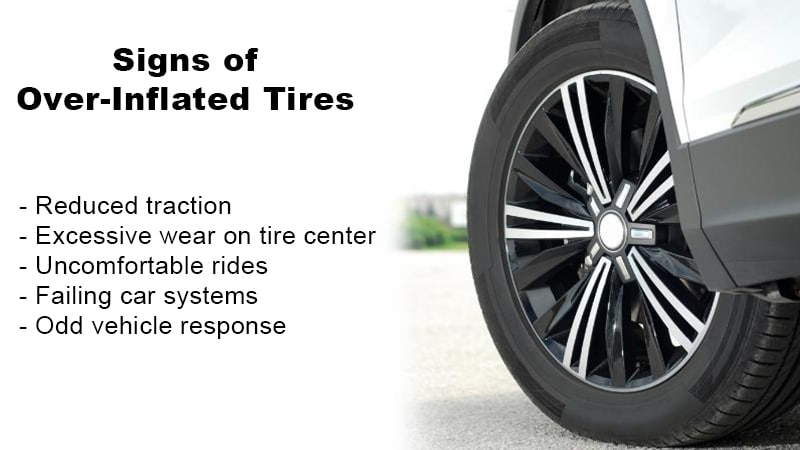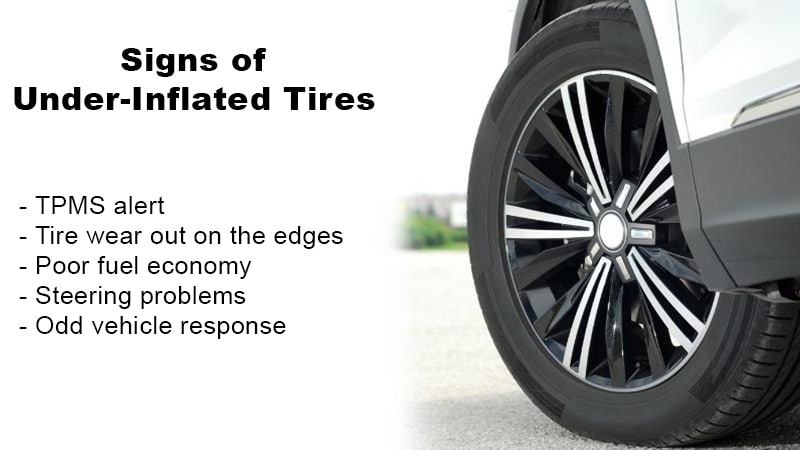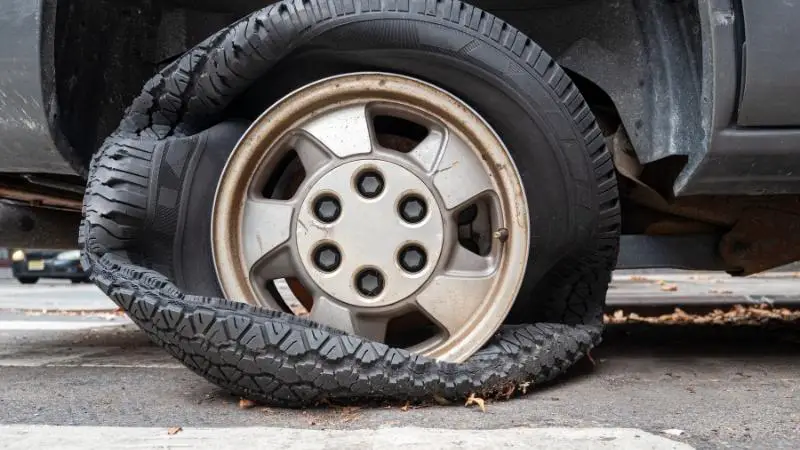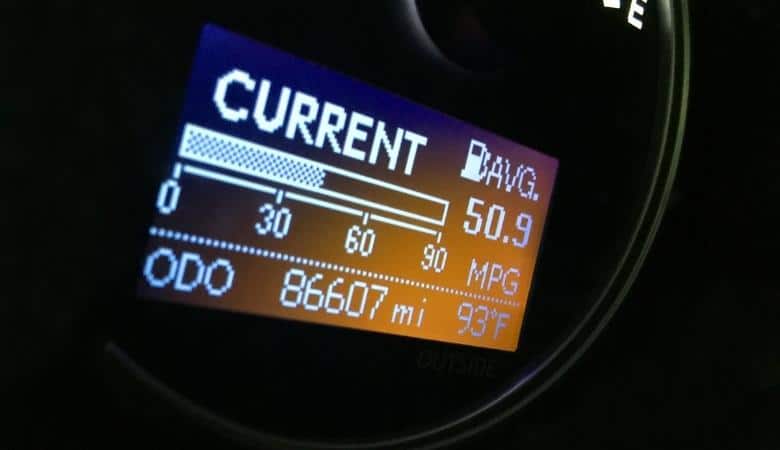When the air pressure in your tires decreases, you might not catch it immediately, but you will eventually.
Tire pressure is may be something you ignore, maybe because you do not have time or know anything about it. But it dramatically determines how safe your vehicle is and how well it performs.
Checking your tire pressure weekly or monthly is advisable to keep your tires in shape and perform at their best. Plus, you could be saving a lot of money while getting the best of your tires as they wear out evenly.
If you have never taken time to check your tires for any issues, below are some indicators that your tires could be over-inflated or under-inflated. You will also learn about the effects of both and how to rectify them.
Signs of Over-Inflated Tires

1. Reduced traction
If you notice that your tires have no traction even though they are fairly new, it likely means that they are over-inflated.
Tires are always in contact with the road, and you should make sure they provide enough grip as needed. If you add excess air pressure to the tires, the center part expands, thus reducing the contact patch. Reduced contact surface will affect the tire traction.
When traction is lost, you will have problems cornering and extended braking distance resulting in a gliding feeling when you stop the car.
Anytime you notice your vehicle sliding too much, it is time you check the PSI to ensure the tires are properly inflated.
2. Excessive wear on the tire’s center
The car’s legal tread depth is above 1.6 mm (1/16″) in most places around the world, which you can measure using the penny test, explained in this post.
Any tread depth below the 1.6mm (1/16″) limit is illegal. If you realize that the center treads of your tires are wearing down faster than the inside and the edge of the tire, it means that you are riding over-inflated tires.
Driving over-inflated tires for more extended periods overwork the center treads, which exposes them to more wearing over time. The surrounding treads could be intact and show no signs of road contact.
3. Uncomfortable rides
When driving over-inflated tires, you will feel the ride to be very uncomfortable. The discomfort extends even when driving on smooth roads because the tires are less flexible and stiffer than correctly inflated tires.
The stiffness will cause the tires to transfer all the impact of potholes and bumps to the suspensions, making the ride unpleasant. Over-inflated tires lose the ability to absorb shocks, which could affect your cars suspension.
4. Failing car systems
Over-inflation will affect not only your tires but also your car systems. These include the anti-lock braking systems and electronic stability program, a standard for every automobile.
These systems work best if the tires have proper grip and traction with the road. The overall function of these systems is tied down to tire performance.
5. Odd vehicle response
Every driver must know the standard operation of the car and understand how the car responds in various situations.
If you notice any abnormal response of the vehicle, you can start by checking the tire pressure. Your traction control may be off because the tire PSI is incorrect.
If you cannot attribute these issues to the tire pressure, you need professional assistance to help fix your car.
Signs of Under-Inflated Tires

1. Tire Pressure Monitoring System (TPMS) alert
Modern cars have pressuring monitoring systems linked to the tires that alert you when the pressure is below optimum.
When the systems detect any slight reduction in the PSI while driving, the TMPS will illuminate on the dashboard. If you ignore these signs, you will experience unsafe driving conditions and increased earing.
2. Tire wear out on the edges
Due to increased contact patch, under-inflated tires tend to wear out on the edges. Most drivers lower air pressure on tires to improve the vehicle’s speed and traction.
While this has been claimed to make the ride smoother, it puts a lot of pressure on the sidewalls. The car’s excess weight will add more pressure on the edges, which leads to uneven wear of the rubber.
Low tire pressure affects vehicle handling primarily when cornering, braking, or speeding on a highway.
3. Poor fuel economy
If you notice that you are making more frequent stops at the gas stations than necessary, the problem could be with your wheels.
The optimum pressure determines the fuel economy of the vehicle the car was tested on during manufacturing. The recommended tire pressure is designed to assist you in economically using fuel.
When the tires are under-inflated, the engine will need more power to rotate the wheels to maintain the same speed.
This means that you will have to fill up on fuel more often. You should therefore check your tire pressure for better fuel economy.
4. Steering problems
Your vehicle may start swaying when taking turns. On extreme ends, steering will be a problem, and maneuverability traces back to poor tire pressure.
When driving at higher speeds on the highway, the car may overturn due to poor cornering when making turns.
Dangers of Riding Over-Inflated Tires
1. Tire blowout

Tire manufacturers always state the maximum tire pressure every driver should follow, these are usually between 32 and 35 PSI, but make sure you check for your specific vehicle as the correct PSI will change depending on manufacturer.
When you go past the maximum rating, increased air compression in the tire will risk blowouts. This can be dangerous, mainly when driving through highways.
2. Poor vehicle braking
Reduced contact between wheel and road surface lowers stability. The car will be bumpy when riding over gravel, rocks, debris, and potholes.
When your vehicle loses grip, the car becomes less responsive, and you will have problems braking on time. Handling is even worse when driving on slippery roads.
3. Front suspension damage
Limited surface contact keeps the front suspension and engine working harder than usual. When the tires are filled with the appropriate PSI, they can absorb impact from potholes and bumps, reducing overworking the front suspension.
An over-inflated tire bounces abnormally, which transfers the shock directly to the front suspension. If this continues, the suspensions become weak, and you might have to replace them sooner before the expected time.
Dangers of Riding Under-Inflated Tires
1. Tire failure
Your tires are always in contact with the road, and when there they are under-inflated, they tend to expand with every rotation.
The internal rubber comes into contact with the road more than it should be—the excessive friction results in overheating, which causes a blowout.
2. Vehicle damage
Under-inflated tires increase the amount of pressure on your chassis and suspension when riding on bumpy or twisty roads.
When this happens, numerous vital components get destroyed along the way. They include brake lines, fenders, rotors, brake lines, calipers, etc. If you do not check the air pressure, you will have expensive repair costs to cover.
3. Increased fuel consumption
Under-inflated tires increase rolling resistance which affects acceleration, speed, and handling. Your engine will have to work twice as harder for each rotation.
This affects your fuel consumption, and you will have to spend more money to compensate. Save your money by sticking to the recommended PSI.
Will Overinflating Tires Improve Gas Mileage?

It has been said repeatedly that under-inflated tires lower the gas mileage, which implies that over-inflating them must improve it. While there might be fewer statistics to back these claims, they make sense.
When you over-inflate the tires, the center bulges out slightly. This means that there will be less surface contact with the road, thus reducing rolling resistance. Decreased rolling resistance lowers friction, so your gas mileage should respond positively.
However, the truth about over-inflating tires is pretty complex. Auto manufacturers build cars with aerodynamics in mind, which means that your vehicle maximizes its fuel economy at higher speeds. Any slight changes to the tires could go undetectable to have less impact.
The bottom line is that while you will enjoy a reduced rolling resistance, you might not experience a higher gas-saving mechanism as planned. For a fact, there are dangers to over-inflating your tires because you have limited control. You might end up in an accident at higher speeds.
While many car owners try to tweak their tire pressures to improve car performance or fuel economy, they do more harm than anticipated. You need to watch out for any signs that would show your tires are over or under-inflated.
First, you need to check the manufacturer’s guidelines on tire PSI before refilling your tires. You might notice uneven wheel wear out, decreased traction, and an uncomfortable ride.
The car systems may also start operating oddly because the tires are not well inflated. Besides checking the tire pressure, monitor the treads to avoid riding around with unworthy tires. Driving safe should therefore start with your tires before looking into other parts.
Hi, my name is Niklas, the head content creator & CEO of Whirling Wheelz. I am very interested in vehicles of all kinds, mainly cars. I have a car mechanics degree from high school and a big hobby of mine is to follow the WRC (World Rally Championship) both online and through travel.


